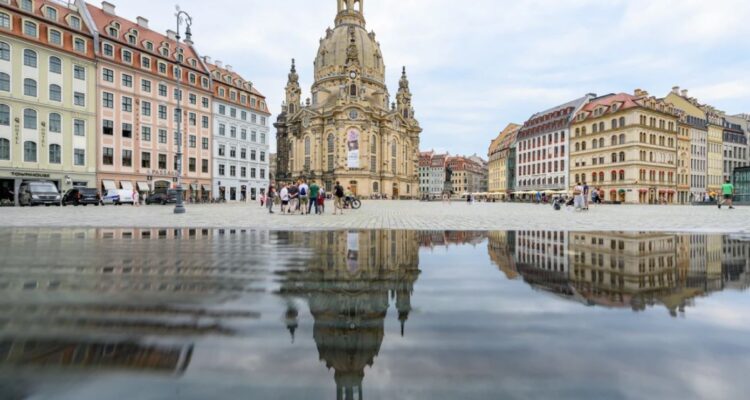Reconstructing war-damaged cities is one thing. Rewriting the past in the process is quite another.
Regular listeners to German radio during the Nazi era would have heard chief propagandist Joseph Goebbels’ programming punctuated by a jaunty jingle, a recording of the carillon bells from a church tower in Potsdam. The picturesque town just outside Berlin was once a Teutonic version of Versailles – a country retreat of the Prussian royal court.
The broadcast bells were not chosen for their melodic qualities, but their symbolic meaning. The church was the Garrison Church, built in the 1730s by soldier-king Friedrich Wilhelm I to serve the military. Its baroque decoration featured grim angels clad in army helmets and carvings of swords and guns.
Even before the Nazis, the church was where colonial troops were blessed before heading off to commit genocide across southern Africa. It was a focus for anti-democracy activists hostile to the Weimar Republic, and then, infamously, was the backdrop for the ceremonial handshake in 1933 when president Paul Von Hindenburg handed over full power to Adolf Hitler. Images of the church were reproduced by the Third Reich on coins, postcards and souvenirs.
Little surprise, then, that when faced with the post-war bombed shell of the church, East Germany’s Communist authorities decided to sweep away the ruins of this tainted monument to Prussian militarism and Nazism rather than restore it. Instead, after 1968, a small computer centre (since repurposed as artist studios) was built on part of the site at the edge of the old town centre.
Read the article by Robert Bevan in the Financial Review.

